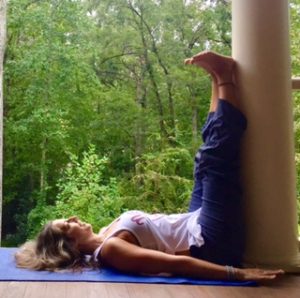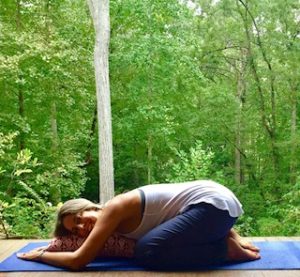 As we have changed the clocks to let the morning light shine a little earlier, we now have more darkness in the evening which, in my opinion, is better for the circadian rhythm. Our ancestors, when no electricity existed, rose with the sun and retired by the moon. In today’s world, it’s more difficult to settle into slumber because we have artificial light and technology to keep us up, but let’s look at sleep and dreams.
As we have changed the clocks to let the morning light shine a little earlier, we now have more darkness in the evening which, in my opinion, is better for the circadian rhythm. Our ancestors, when no electricity existed, rose with the sun and retired by the moon. In today’s world, it’s more difficult to settle into slumber because we have artificial light and technology to keep us up, but let’s look at sleep and dreams.
We all sleep and, in fact, the latest statistic I saw was that the average human sleep twenty-six years of their life. While we know the benefits of quality sleep, we often don’t hear a great deal about the dream state. While everyone sleeps, did you know that everyone dreams every night? In fact, we have three to six dreams each night, but over 95% of dreams are simply forgotten. The dreams that we often remember are the ones that would be classified as bizarre, adventurous, serious, or fun. The ordinary dreams fade into the dark and are forgotten.
Dreams and Science
Dreams are defined as a series of images, stories, and emotions that occur throughout the sleep stages. Dreams occur during the REM (rapid eye movement) stage which takes place 90-120 minutes after you’ve fallen asleep. The dreams you do remember may seem long, but they usually last ten minutes. Studies are being done on why we dream, but the original idea was that they occur so that we can process what has happened during the day.
I’ve often wondered if dreams help or hurt sleep quality. As one might think, nightmares can certainly make it more difficult to fall asleep after they’ve occurred. In fact, research shows that individuals who have negative dreams have higher rates of stress during the day. That stress might be bleeding into the evening slumber and creating nightmare conditions. Scientists are studying this more. What also is being readily studies is sleep deprivation. When someone is sleep deprived, there is greater brain activity during sleep and dreaming is increased and, most likely, more vivid. What about dreams for someone who gets quality sleep?
Why we dream is still a question that sleep experts ponder. What they do know is that dreams do assist the brain with consolidating memories, improving cognition, expressing our deepest desires, confronting potential dangers, and emotional processing of events. While researchers suggest that dreaming is essential to our mental, emotional, and physical well-being, others believe that dreams do not serve a purpose. While there are many theories, no single consensus has emerged. What is true is that even while we’re asleep, our brain is still active.
the brain with consolidating memories, improving cognition, expressing our deepest desires, confronting potential dangers, and emotional processing of events. While researchers suggest that dreaming is essential to our mental, emotional, and physical well-being, others believe that dreams do not serve a purpose. While there are many theories, no single consensus has emerged. What is true is that even while we’re asleep, our brain is still active.
Rituals and Sleep
To prime ourselves for the best, deep sleep, it’s good to be consistent. Try these when creating your sleep ritual.
- Step away from technology, the phone or stimulating conversations at least 60 or 90 minutes prior to bedtime.
- Keep your phone, television and any other technology out of the bedroom.
- Do a restorative yoga session even if it’s simply lying on the floor with your legs up the wall or lying in savasana and breathing.
- Prepare a diffuser in your bedroom that has essential oils of lavender and ylang ylang.
- Take an evening shower with dim lighting that helps your body recognize it’s time for sleep.
- While your pores are open, use a nighttime lotion of lavender, magnesium, and other helpful essential oils to help you find your bliss.
- Make sure the temperature is cool, but not too cold. Have a blanket handy in case you need it.
- Journal in bed and write down three things that you’re grateful for.
- If you do read, read a real book, or turn the blue light off your device and read something that isn’t stimulating.
- Turn off the Wi-Fi so there no sleep disturbances from electric and magnetic fields (EMFs).
- Turn the light off and use an eye mask to shield you from artificial light.
- On the weekends, try not to waiver too far from your weekday wakeup and bedtime. Two hours is the maximum before we start getting jet lag from simply changing up our routine.
While we may not know the true purpose of dreams, creating a sleep routine can be helpful and allow us to feel less stressed as we slip into slumber. By doing so, maybe there’s more opportunity to remember our dreams, hopefully pleasant ones. Want to learn more about some common themes of dreams, check out this article.


